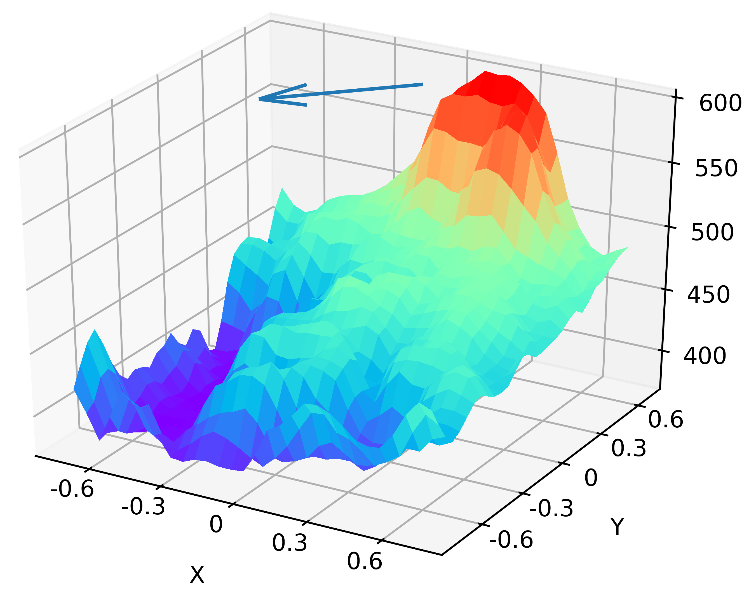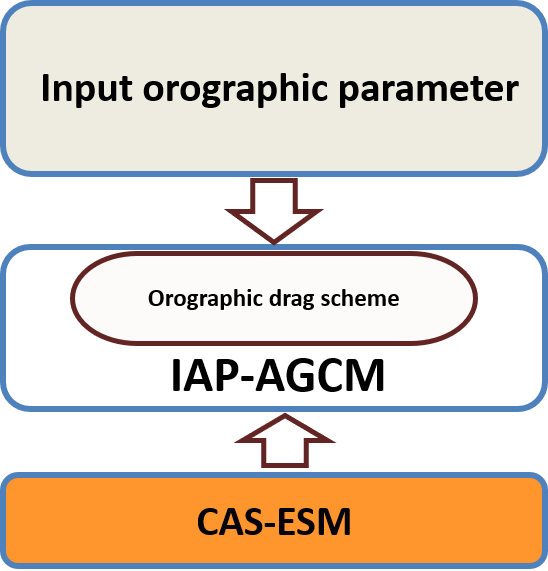Orography influences the atmospheric circulation through a wide range of spatial scales from 100m to 1000km. Misrepresentation of the orographic process has led to notorious bias in the models including the longstanding excessive rainfall in the steep elevations of the Himalayas. This prevents better use of model forecasts and predictions of extreme event and water resource change in this renowned water tower of Asia. Mountain ranges can affect the mountain weather and climate in various ways, and one important aspect is orographic anisotropy. Orographic anisotropy is referred to as the property of elevation change being directionally dependent on the orography. However, explicit representation of this effect for all flow directions within the model is confined to 8 representative directions (e.g., East, South, West, North, Northeast, Northeast, Southeast, Southwest).
"We need to improve the model's ability to simulate the mountain climate", said Dr. XIE Jinbo from the Institute of Atmospheric Physics at the Chinese Academy of Sciences, "Incorporation of the orographic anisotropy, is one of the most crucial aspect for sub-grid orographic drag parameterization known for its high uncertainty, and can contribute to better simulation of the mountain climate and its application in mountain studies."

Fig.1 Schematic map of the orographic asymmetry (OA) under an idealized topography. The direction vector depicts the OA inclination vector defined as the normalized vector between the model's center grid point and the "center of mass" of the subgrid mountain heights. The x and y axes represent the west‐to‐east and south‐to‐north directions, respectively. (Image by IAP)

Fig. 2 Coupling of the orographic drag scheme with the CAS-ESM. (Image by IAP)
Dr. XIE and his collaborators developed a new orographic drag scheme on through refining the method for derivation of orographic parameters for all flow directions, and then coupled new scheme with the Chinese Academy of Sciences – Earth System Model (CAS-ESM), to test its impact on model climate. Compared with the earlier version, the updated model has shown to have better wind and temperature simulation in the complex terrain region such as the Himalayas, a region well-known for its notorious bias due to mis-representation of its steep elevation and complex terrain in the model.
"Incorporating this effect can enhance the model's application in forecast and prediction in the mountain climate", Dr. XIE believes, "With the new model, we may help to forecast and predict how much wind or precipitation may affect the mountain climate on various time from seasonal to multi-decadal scale. This would benefit the society through disaster warning for regions such as the DaLiangShan known for its intense rainfall and debris flow."
This series of studies have been published in the special section "The Chinese Academy of Sciences Climate and Earth System Models (CAS-FGOALS and CAS-ESM) and Applications" in Journal of Geophysical Research- Atmosphere and Journal of Advances in Modeling Earth Systems.
Citation:
1)Xie, J., Zhang, M., Zeng Q., Xie, Z., Liu, H., Chai, Z., He, J. X., & Zhang, H. (2021). Implementation of an orographic drag scheme considering orographic anisotropy in all flow directions in the Earth System Model CAS-ESM 2.0. Journal of Advances in Modeling Earth Systems. https://doi.org/10.1029/2021MS002585.
2)Xie, J., Zhang, M., Xie, Z., Liu, H., Chai, Z., He, J. X., & Zhang, H. (2020). An orographic drag parametrization scheme including orographic anisotropy for all flow directions. Journal of Advances in Modeling Earth Systems, 12, e2019MS001921. https://doi.org/10.1029/2019MS001921
Media contact: Ms. LIN Zheng, jennylin@mail.iap.ac.cn
